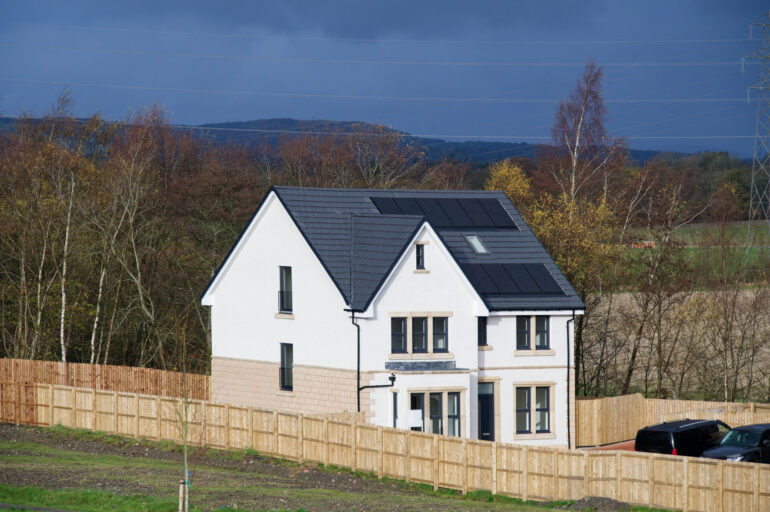A house’s carbon footprint decreases by more than 1kg in carbon dioxide equivalent (CO₂eq) for every euro (approximately £0.80) invested in sustainable building materials, according to new research from Université Libre de Bruxelles and Corvinus University of Budapest. The study found that sustainable windows and external walls had the greatest impact on reducing emissions.
Bruno van Pottelsberghe, rector of Corvinus University of Budapest, and Joran Douhard, PhD candidate at the Solvay Brussels School of Economics and Management of ULB, compared standard detached and semi-detached houses with more sustainable versions built using environmentally friendly materials. Their analysis standardised emissions using carbon dioxide equivalents, taking into account the warming potential of gases such as methane, which has 28 times the impact of CO₂.
The research found that 65% of a house’s total carbon footprint comes from its operational stage, primarily due to energy consumption, rather than construction or maintenance. When considering all costs—including construction, operation, and maintenance—the total cost of ownership for more sustainable houses was 7-11% higher than standard houses. Maintenance costs were also higher, by 20% for detached homes and 13% for semi-detached homes, due to the more frequent replacement of sustainable materials.
“The impact of the construction sector is country-dependent, so international comparisons should be made with caution (e.g., operational impact is highly dependent on heating systems, which vary a lot between regions). Nevertheless, some observations can be easily generalised to a wider EU context, such as the lower overall impact of timber frames compared to concrete structures or the imbalance between embodied and operational carbon impacts. As the methodology and data are available, interested readers will be able to easily adapt our results to local specificities,” say the researchers.
Certain components of a house had a greater impact on reducing emissions. Sustainable materials used for external walls reduced emissions by 6kg per euro invested, while sustainable windows lowered emissions by between 3kg and 6kg per euro invested.
With the residential sector responsible for 17% of global carbon emissions, the researchers suggest this area should be a key focus for reducing society’s overall carbon footprint. Their findings indicate that prioritising sustainable materials in specific areas of a home could have the greatest impact on emissions reduction.
The study was published in the Journal of Cleaner Production.




